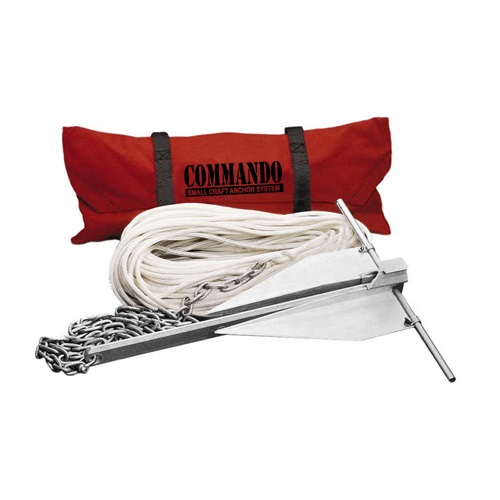Why Lower Unit Maintenance is Critical | Lower Unit Guide

Ensuring lower unit maintenance is critical for marine engines like Yamaha, Mercury, or Honda. Regular lower unit maintenance not only prevents costly breakdowns but also ensures safe, smooth cruising. Whether you’re checking fluid levels, inspecting seals, or performing a full service, sticking to a lower unit maintenance routine prolongs lifespan and increases performance. In this guide, we cover everything from identifying wear and tear to complete lower unit maintenance procedures—backed by industry best practices.
Why Lower Unit Maintenance Matters
What Is the Lower Unit & Why It’s Important
The lower unit sits at the base of your outboard motor and houses gears, shafts, and fluid that transmit power to the propeller. Neglecting lower unit maintenance can cause:
- Gear degradation
- Seal failure leading to water contamination
- Lost engine performance
- Potential total gearcase replacement
Common Signs You Need Lower Unit Maintenance
Even if your boat seems fine, check for these signs:
- Grinding or whining sounds in gear shift
- Oil leaking from the gearcase
- Cloudy or milky lower unit oil (indicating water ingress)
- Propeller vibration or poor performance
If you spot any symptoms, proactive lower unit maintenance can often save you money and downtime.
When to Service Your Lower Unit
Recommended Maintenance Intervals
- Seasonal or annual fluid change
- Every 100 hours for high-use boats
- After deep-water exposure or beaching
DIY vs Professional Service
While many boat owners can perform elements of lower unit maintenance themselves, complex tasks (like gear replacements or seal installs) may require professional tools and experience.
Step-by-Step Lower Unit Maintenance Guide
Tools & Materials Needed
- Lower unit gear oil (check manufacturer spec)
- Replacement drain/fill plugs and O‑rings
- Sealant or gasket materials
- Clean container to catch fluid
- Torque wrench, socket set, screwdriver
Drain & Inspect Fluid
- Remove the drain plug (bottom), and fill plug (side).
- Let oil fully drain into a catch container.
- Inspect oil—brown/transparent is normal; milky = water contamination.
- Note any metal particles; finish oil analysis or inspect gearcase if metal flakes appear.
Replace Plugs & Seals
- Clean plug threads and cavity.
- Install new O‑rings or gaskets.
- Torque to manufacturer specs.
- Apply sealant if required.
Refill with Fresh Gear Oil
- Use OEM-approved lower unit maintenance fluid.
- Fill until oil seeps from the upper vent port.
Test Functionality
- Shift through gears while running engine in short bursts.
- Check for leaks around plugs or seals.
- Address any abnormal noise or leaks before extended use.
Lower Unit Maintenance Cost Analysis
Cost Breakdown
| Item | DIY Estimated Cost | Professional Service |
|---|---|---|
| OEM Gear Oil (12 oz) | ₹1,200–₹1,800 | — |
| Drain/Fill Plugs & O‑rings | ₹300–₹500 per set | — |
| Sealant | ₹400 | — |
| Labor (2 hours average) | — | ₹3,000–₹4,500 |
| Total Estimated | ₹1,900–₹2,700 | ₹3,000–₹4,500 |
You can save significantly with DIY while maintaining quality—just maintain proper technique.
Fitment & Compatibility
Understanding Fitment for Different Engines
Whether using Yamaha, Mercury, or Suzuki lower units, correct fitment matters. XO gear lengths, spline counts, and pitch must match your engine model. For example:
- Verify engine model year for Yamaha SHO Lower Unit fitment
- Use lower unit maintenance routine tailored to your engine’s torque spec
Lower Unit Maintenance for Yamaha 150
- Use only Yamaha-approved fluids.
- Shifting rod sealing is critical on Yamaha models.
- Mid-season check recommended after high-speed or offshore use.
Long‑tail variation: lower unit maintenance cost comparison shows Yamaha parts may cost more, but longevity is worth it.
Pro Tips for Lower Unit Maintenance
Best Practices
- Always warm up engine before fluid changes—warmer oil drains faster
- Keep spare O‑rings in toolkit
- Check and clean the lower unit vent regularly
- Inspect prop shaft and replace or grease water pump housing during fluid change
DIY Lower Unit Maintenance Tools
- Seal puller
- Torque driver or wrench
- Clean rag and gloves
📌 FAQ Highlights
- How often should I perform lower unit maintenance?
You should change gear oil every season or at least annually. For heavy use (e.g., daily boating), service every 100 hours. Saltwater or offshore use demands more diligence—frequent inspections can prevent seal leaks and bearing corrosion. - What does milky lower unit oil mean?
Milky oil signals water inside your gearcase—this can damage gears and bearings quickly. The solution? Drain oil, replace O‑rings, and refill. If water damage is extensive, you may need a full lower unit rebuild. - Can I do it myself?
Absolutely—many owners tackle lower unit maintenance with basic tools. You’ll need to warm up the engine, drain oil, replace seals properly torqued, refill and test run. If doing internal gear work, consider a pro mechanic. - What’s the cost?
DIY kit is ₹1,900–₹2,700. If hiring a marine shop, expect ₹3,000–₹4,500 depending on marine labor rates. - Choosing the right oil?
Stick with OEM or approved GL‑5 synthetic gear oil. Wrong oil = wasted money and risk to internal parts.
Conclusion & CTA
Maintaining your lower unit maintenance is essential to ensure safety, longevity, and performance. Regular checks, seasonal gear oil changes, plug and seal inspections will keep your outboard running strong. Plus, don’t forget that using the correct parts like Yamaha SHO Lower Unit and Yamaha 150 Lower Unit helps avoid compatibility issues.
🎁 Special Offer:
Use code welcome5 at checkout on AllBoatSupplies.com to get 5% instant discount on all parts, including gear oils and replacement plugs.
Ready to maintain, service, or upgrade? Shop now our full range!


















































































